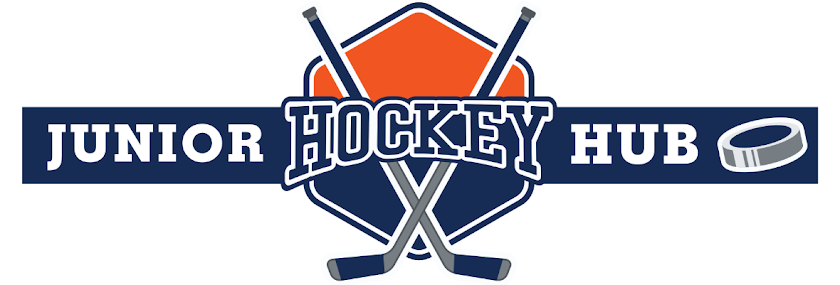Amid a pandemic that drastically affected all youth and Junior hockey in North America last year, the North American Hockey League (NAHL) rose to the top of the NCAA Division I commitment performance rankings. These rankings are based on data from the time period July 1, 2020-June 30, 2021.
The Junior Hockey Hub is the only organization that pulls and stores NCAA Division I commitment data regularly so where the player is playing when the commitment is made is memorialized. This is a critical point in comparing leagues and organizations regarding Division I commitments. As players progress through the "system" toward college hockey, each organization for which a player suits up makes a commitment claim. For example, if a 16U player makes a commitment and then progresses through two Junior leagues, and maybe three Junior teams, his commitment will be claimed by up to four organizations and/or leagues. What gets lost a couple years down the road is where that player was at the critical point in the recruiting process.
This credits the organization and the league which -- for that player -- provided the ultimate platform and service to acquire a Division I commitment.
The Junior Hockey Hub also tracks advancements, which is from where players advance directly to NCAA Division I, II and III college hockey rosters. This data is done each fall by scouring NCAA rosters and determining where all freshmen played the prior year. This data is important as players/parents can look at where they likely need to be playing to have the best chance at cracking a college roster spot.
The Junior Hockey Hub does not track Division II and III commitment because that data, compared to the actual NCAA roster data on Dec. 1 of each year, is generally not close to matching up. Given there are no National Letters of Intent for Division III athletics, the system by which players commit to programs means they plan on attending that university and they may try out for the hockey team. Not to mention the fact they actually have to make the team. So Division III data is only tracked by actual advancements to cut through enormous amount of "commitment" announcements that never pan out at this level.
Getting back to 2020-21 season, the NAHL toppled the United States Hockey League (USHL) in overall commitment numbers for the second year in a row. Before you hit the Comment section -- yes I know the USHL has a clear lead in per-team commitments. There are far fewer USHL teams than North American League teams, and only an eight-commitment difference. However that does not take away from the fact the NAHL has steadily built its performance in this area.
I don't believe anyone would make the argument that the USHL isn't the clear leader in overall commitment efficiency for all its players. I will make the argument that the NAHL, under the leadership of Mark Frankenfield, has positioned itself to capitalize on the USHL's move to become a younger league. The USHL, NAHL and USA Hockey negotiated a player movement agreement a couple years back that created a partnership between the leagues and set up a situation of apples and oranges in regards to how they attack the commitment/advancement process. Essentially players can move from NAHL to USHL during the season per the details of the agreement. It's no longer a player-by-player negotiation. This has -- in my opinion -- created an environment where a player has nothing to lose by joining a NAHL team, which in turn positions the NAHL as a better landing area for the 20-year-old players who fall victim to the USHL's 20-year-old player limit. In the USHL you could play for a team for two years, for example, and be cut as a 20-year-old because that league limits the number of age-out players its teams can roster.
For many years the British Columbia Hockey League has been pointed to as the second best college placement league in North America, but the data has not supported that for the past three years and the pandemic has caused the river to change paths. If the NAHL plays its cards right, it will continue to strengthen its performance and the border-crossing for Division I-type Junior players will continue to be low even after there is free, non-pandemic movement again.
Some other notes point to the lack of high school hockey last year as the reason for a glaring drop in commitments at that level. High school hockey commitments are mainly a Minnesota thing. The U.S. Prep scene has been eroded by the gradual increase in academy-style hockey as some prep schools are now playing 15U-16U-18U AAA hockey instead of prep, even though the education component remains prep. For our data purposes the level of hockey being played is how the commitment is listed. A good example is Shattuck-St. Mary's prep school, which for many years has been playing AAA level hockey. Some prep schools have followed that model while other clubs are partnering with local prep schools for education, or offering outright virtual education while playing AAA level hockey.
The 2021-22 season will also have some odd data given the number of NCAA players who take their fifth year of eligibility and the number of players who have aged out of Juniors in 2021. This puts NCAA coaches in a fairly leveraged situation, as teams (in general) won't lose as many players while the pool of potential incoming freshman is large. There are also a number of Division I players in the Division III transfer portal which will further tie up Division III spots for next year.
It is hoped the chart below and the narrative above has provided a good framework of information for those of you who are trying to chart a path toward college hockey. Please direct any questions via Twitter @juniorhockeyhub or via the Comments section below.

